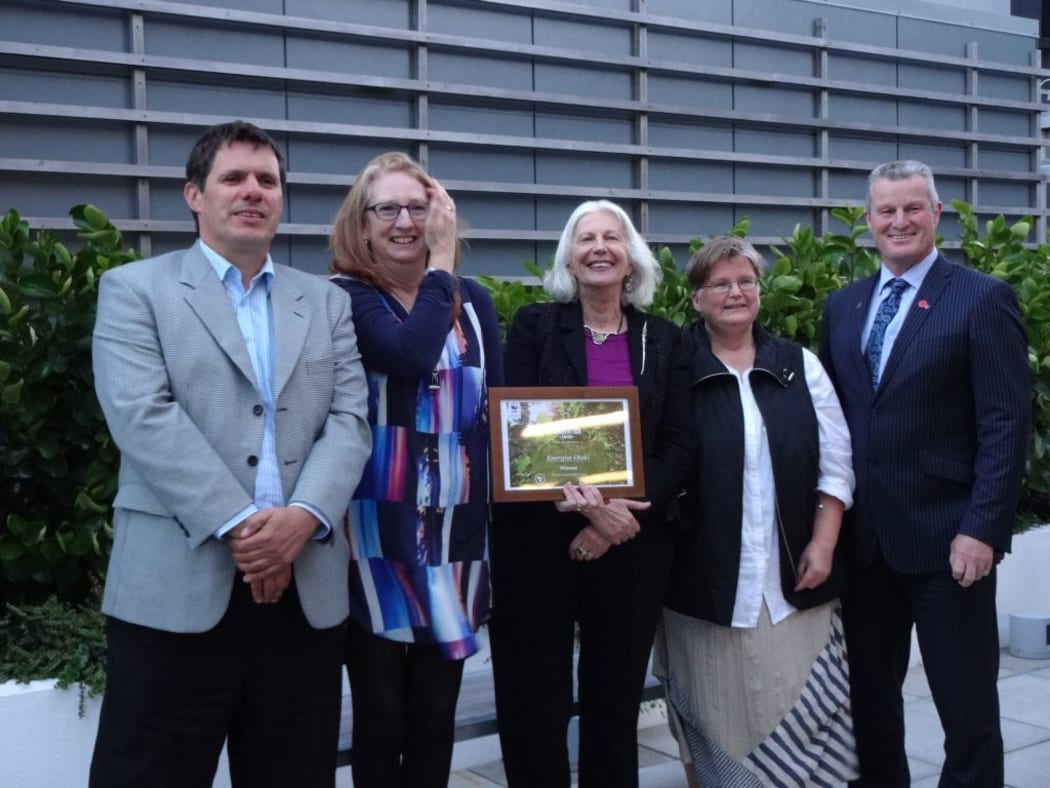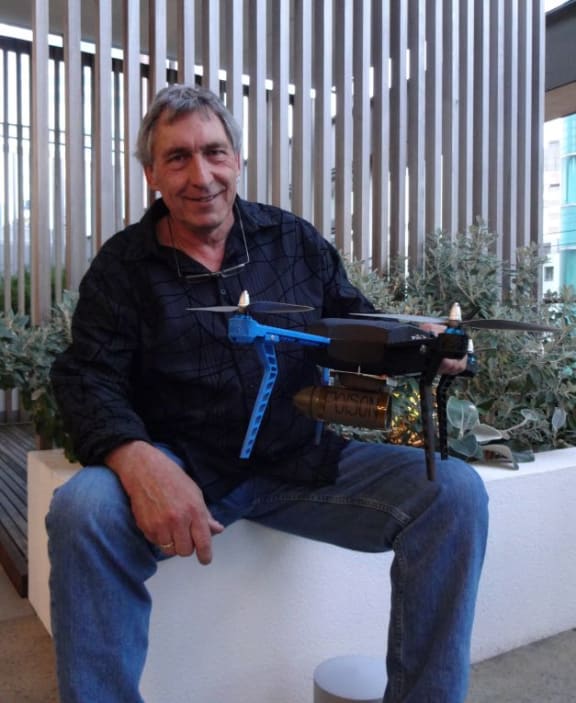by Veronika Meduna Veronika.Meduna@radionz.co.nz

The community collective Energise Otaki won the project category for its range of initiatives that encourage locals to reduce their environmental footprint. From left to right are Leigh Ramsey from Biofuels Ltd, Sue Hurst from the Kapiti Coast District Council, special guest speaker Dame Anne Salmond, the convenor of the Energise Otaki project Gael Ferguson and principal of Otaki College Andy Fraser. Photo: RNZ / Veronika Meduna
A mobile phone predator alert, GPS harnesses on cats and automated bird song recognition software – these are just some of the high-tech ideas that have been recognised this week at WWF-New Zealand’s inaugural Conservation Innovation Awards.
WWF-New Zealand’s head of conservation projects, Lee Barry, says she hopes the awards will help to encourage innovation and the use of technology in conservation.
"We know that there is an army of conservation volunteers putting in hours of work to protect our native species and precious places, but we’re not being smart about how their time is used. We wanted to harness the innovation that we know is out there in businesses, the research sector, in the community and in design labs and apply that to some of the conservation problems." _Lee Barry
Ideas and inventions could be entered in three categories: product, project and research. The winner in each received $25,000 to speed up the development and testing of their concept or product so it can be used in the field.

Inventor Gian Badraun won the product category for his Trap Minder technology that monitors predator traps and bait stations. He also developed a drone that can be used to drop bait. Photo: RNZ / Veronika Meduna
Trap Minder, the winner of the product category, was developed by inventor Gian Badraun and his team at MicroSystems Research as an early response system for monitoring predator traps and bait stations. A miniature heat and motion sensor on the trap or station can detect warm-blooded mammals and remotely send an alarm by email, text and mobile app. Currently almost all of the hundreds of thousands of traps and bait stations across the country need to be checked manually, but this smart and simple technology could save time and improve response rates, especially in pest-free mainland sanctuaries and offshore islands where re-invasion by a single pest can wreak havoc. The grant will allow Gian to work with Glenfern Sanctuary on Great Barrier Island to trial 20 of the units to monitor the predator-proof fence.
The runner-up in this category is an easy-to-use Kauri dieback boot-cleaning station, developed by Amanda Walker, an industrial design and innovation student at AUT.
The project category winner is Energise Otaki, a community initiative that encourages people to reduce their own and the town’s environmental footprint through a range of projects that reduce greenhouse gas emissions, supply clean and cheap energy, create jobs and educate kids. The local Otaki College has incorporated the project’s goals into its teaching and other activities, including the conversion of the college tractor to blended fuels and the use of solar energy. Principal Andy Frazer says the project makes science and environmental education real for the students.
"Ultimately, I’d love to see education connecting with conservation and our schools becoming the conservation sites of the future, because that’s what needs to happen if we are going to do something that will reshape the way we think and act. Our young people are the ones to do it." _Andy Frazer
The runner-up is CatchIT, an online database of predator trapping and baiting information, with charts, maps and in-depth statistical analysis that make the data interactive and engaging. CatchIT was developed by Rachel Fewster at the University of Auckland.
CatTracker, winner of the research category, combines GPS tracking and citizen science to monitor where cats go, what they get up to and how owners can manage pet cats to reduce their impact on wildlife. The project is led by Heidy Kikillus for Victoria University and Wellington City Council, and the prize money will be used to expand the study to up to 500 households and cats across the capital, especially in the suburbs around the Zealandia sanctuary. You can listen to an earlier feature about Heidy Kikillus' research here:
The runner-up in the research category is a bird song recognition software package developed by Nirosha Priyadarshani at Massey University’s school of engineering and advanced technology.

